In the past few months, the smartphone market has seen frequent releases. The most exciting news was kicked off by Apple's release of the iPhone 16 series in September. Huawei, OPPO, vivo, Honor, Xiaomi, Motorola, OnePlus, and Realme have all launched new models, seizing the market in terms of price, performance, and design. Motorola has even ushered in the highest quarter of shipments in the smartphone era.
On November 4, Huawei's Yu Chengdong announced that the Mate 70 series is ready to go and will be released in November, equipped with a native Hongmeng operating system and Kirin 9000S chip, with 95% of the overall parts being localized. Subsequently, photos of the real machine sparked heated discussions online.
The smartphone market will continue to grow
Driven by such lively competition among brands, technologies and consumer demand, the smartphone market has maintained a sustained growth trend this year. According to a report by Counterpoint Research, global smartphone shipments in the third quarter of 2024 increased by 2% year-on-year, reaching 307 million units.
At the same time, global smartphone revenue and average selling price both hit record highs, with revenue increasing by 10% year-on-year and average selling price increasing by 7%, reaching US$365, or about RMB 7,189. The reason behind the rising trend is the acceleration of the high-endization of the global smartphone market. The market provides impetus for the development of high-performance and advanced technologies of smartphones. Under this cycle, the smartphone market will remain dynamic and competitive.
High-end phones turn to high-end phones, and domestic brands join the high-end phone market
Tarun Pathak, research director of Counterpoint Research, said when talking about the prospects of smartphones that the global smartphone market is turning to high-end phones, and smartphone revenue will continue to grow in 2028.
The high-end trend has influenced major domestic mobile phone brands to enter the high-end market. Honor Magic 7, Xiaomi 15 series, OnePlus 13 series, iQOO 13, OPPO Find X8 series and vivo X200 series have upgraded their equipment in terms of performance, processor, camera and battery, launched a number of flagship models, and joined the competition in the high-end market. Some brands have even surpassed international giants in specific markets.
Mobile phones achieve network-free communication
With the advent of the AI smartphone era, the deep integration of GenAI functions and smartphones has brought intelligent and personalized experience to mobile phones. The diversified needs of consumers and the high demand for new phones have driven the increase in mobile phone shipments.
The application of "network-free communication" on smartphones has also received widespread attention from the industry and the public. Although the application of "network-free communication" on mobile phones is a communication method that has just emerged in recent years, since this technology has always been the mode of existence of walkie-talkies and Bluetooth devices, mobile phone users have widely accepted this communication mode.
This year, brands such as Xiaomi, vivo, and OPPO have made significant moves in "off-network communication". For example, Xiaomi's "Star Communication System" allows kilometer-level off-network calls, vivo's 1,500-meter off-network communication technology, and OPPO's MeshTalk technology all provide off-network communication technology services on mobile phones, bringing diversified communication modes to smartphones. There have been articles describing "off-network communication" before. For more information, please see Mobile phones and watches turned into walkie-talkies, artifacts or useless?
Wireless communication provides seamless connection, real-time and reliable data transmission for smart homes, post-disaster emergency communications, the Internet of Things, and other special application scenarios. At this time, the application of off-network communication on smartphones is an effective supplement to the limitations of cellular networks under current technology.
This paper is from Ulink Media, Shenzhen, China, the organizer of IOTE EXPO (IoT Expo in China)

















